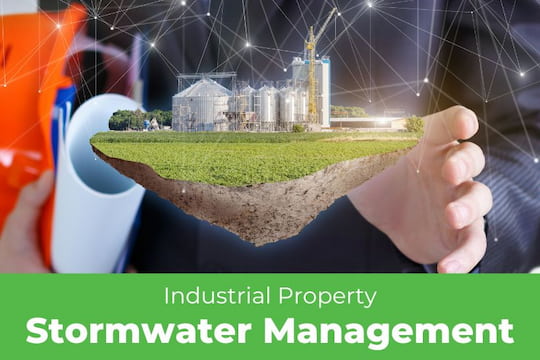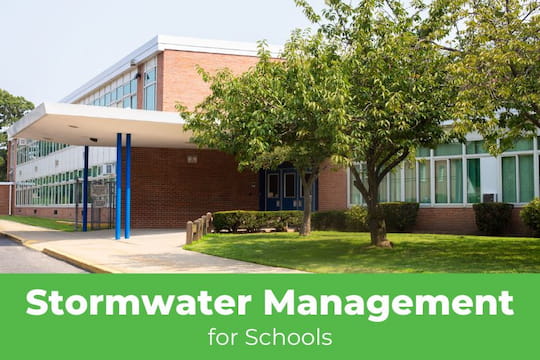In a time of heightened environmental awareness and an increasingly urgent need for responsible management of resources, commercial property management is seeing an increasing shift toward sustainable practices. Integrating sustainable practices comes with some challenges, but it also aligns with greater tenant satisfaction, more effective property management, and improved environmental stewardship.
The following trends represent changes shaping commercial property management and development practices to keep commercial properties relevant and sustainable for the long haul.
Improvements in Energy Efficiency

Sustainability trends in commercial property management start with straightforward steps such as integrating LED lighting into commercial properties. Newer LED bulbs produce warmer shades of white and offer features such as color-changing bulbs. Other ways companies save energy include upgrading to smart HVAC systems, which use technology to monitor and respond to temperature fluctuations more closely to reduce wasted energy. Commercial appliances such as industrial refrigerators can also be upgraded to more energy-efficient models.
Integrating Renewable Energy
Renewable energy, including solar panels, is becoming integrated into many commercial properties. Some businesses with large parking lots, such as schools, have added covered car port-style parking with solar panels on the structure's roofs to gather energy.
Small-scale wind turbines are installed on commercial properties to generate clean energy, especially in areas with consistent wind patterns, to reduce reliance on traditional sources such as fossil fuels.
Geothermal systems use the Earth's natural temperature to provide energy-efficient heating and cooling systems. Hydropower, which uses water to generate energy, is being used as micro-hydropower systems for companies located near bodies of water or with access to flowing water.
Green Buildings

Companies increasing their sustainability are pursuing certifications such as BREEAM (Building Research Establishment Environmental Assessment Method) and LEED (Leadership in Energy and Environmental Design) to inform potential tenants, investors, and the community about their commitment to sustainable building and operating practices.
Recycling and Reducing Waste
Commercial properties are participating in reducing waste by implementing strategies to cut down in various ways, such as sustainable packaging, lean manufacturing, upcycling, and reuse programs. They are also improving their recycling programs to continue minimizing commercial waste's impacts on the surrounding environment.
Water Conservation
Sustainability trends in commercial property management include installing newer fixtures to handle water efficiently. HOA stormwater management has evolved to include more resident education about keeping pollutants off streets and driveways and using more permeable materials in residential landscaping.
Developers and property managers are installing more drought-tolerant landscaping that often includes plants native to the area, which require less water, fertilization, and pesticides. Cities are installing water reclamation and recycling systems in parks and other public spaces to reduce water consumption and minimize pollution.
Smart Building Technologies

Commercial properties are cutting their energy usage by getting “smart.” Smart devices are wired or wireless electronic devices that can automatically control equipment or be controlled remotely. Devices include sensors that can moderate and control lighting, cooling and heating, sprinklers, and other systems to optimize the energy they use while having them operate when needed.
Living Walls and Green Roofs
Some property managers have added green roofs to take advantage of plants' cooling and insulating power. Applying the same concept to walls creates living walls that also enhance insulation and energy efficiency.
Both methods are effective stormwater management systems that reduce the amount of rainwater runoff from commercial properties. Reducing runoff reduces erosion and allows rainwater to soak in where it lands, which helps recharge local groundwater stores. It also helps filter the water so that sediment and pollutants do not leave the commercial property and flow into local water bodies. These outcomes reduce the burden on the city's drainage systems, which decreases the risk of flooding, especially in urban areas, during storms.
Green roofs and living walls also add aesthetic beauty to properties and can reduce the heat island effect in urban settings. Organic matter absorbs heat and cools the environment more than concrete and asphalt. The plants release oxygen and absorb pollutants, which function as natural air purifiers, improving the air quality for building occupants and the surrounding community. The added greenery also creates new animal habitats, such as local bird populations and insects. The beneficial plants can support and enhance local biodiversity and ecosystems in urban environments.
Sustainable Construction
Using eco-friendly materials is a trend that reduces the environmental impact of commercial buildings. Some developers use materials from sources such as certified wood harvested from sustainable forests. Responsibly sourced materials may also include recycled or reclaimed materials that help reduce the demand for new materials. Developers also lean toward materials like bamboo and recycled steel because of their reduced environmental impact.
Sustainable construction practices such as lifecycle assessment to evaluate the ecological impact of building processes and materials make it easier for the environment and reduce maintenance. These practices consider the whole building lifecycle from the origination of materials to their disposal.
Personal Wellness and Indoor Air Quality
Commercial building designs and renovations have increasingly emphasized healthier indoor environments to make the property more sustainable for ongoing business use. Sustainability trends in commercial property management include upgraded HVAC filtration, atriums and larger windows to use natural lighting, and integrating building design principles that focus on wellness.
Electric Vehicle Charging Stations

Commercial property managers make it easier for building occupants to adopt electric vehicles by providing on-site EV charging stations. This step supports the move to electric transportation and more sustainable commuting.
Some cities may adopt regulations to encourage sustainable practices, and adding EV charging stations may qualify the commercial building for specific certifications or incentives.
Measuring Carbon Footprint
Commercial properties are starting to adopt tools that measure their carbon footprint. A building's carbon footprint is the amount of greenhouse gases that the property's actions generate, including methane and carbon dioxide. Regulatory bodies may sometimes require buildings to measure and report this metric. They may also need to develop and follow through on a plan to reduce greenhouse gas emissions over time.
Engaging the Community
Commercial property developers and managers cannot effectively implement sustainability measures without the aid of the people who use the properties. Public education and initiatives can increase the focus and engagement with the community regarding social responsibility for sustainability and other environmental protection measures.
Sustainability is Easier Said Than Done
Many barriers to sustainability exist, and regional variations can create different obstacles in one locale versus another. Changes in public awareness, shifts in market dynamics, and technology advancements can also play essential roles in the success of adopting effective sustainability measures.
High start-up costs
Sustainability measures often involve an upfront investment to purchase and install equipment, update technologies, and make other changes. Developers and commercial property owners may be reluctant to allocate funds to cover the initial expenses. Newer sustainability trends that have yet to be proven do not provide a clear or guaranteed return on their investment.
However, investing in sustainability measures can provide a way to future-proof buildings by anticipating growing trends such as increased adoption of electric vehicles.
Regulatory barriers
Regulations related to sustainability continue to develop and evolve. Inconsistency or unclear regulations make complying with sustainability standards and energy efficiency measures challenging. The lack of a standardized regulatory framework causes obstacles and confusion for developers and property owners. It also can impede their efforts to implement new sustainability measures.
Commercial Sustainability Actions for the Future
As commercial property management evolves toward increased sustainability, embracing responsible practices has become vital for ongoing commercial success. The path may present certain challenges, but overcoming them paves the way for a more resilient and environmentally responsible commercial property landscape.
If your property needs assistance with stormwater drain cleaning and other vital measures to enhance sustainability and environmental stewardship, contact CatchAll Environmental today to see how we can help you put your stormwater management on auto-pilot.













.jpg)


